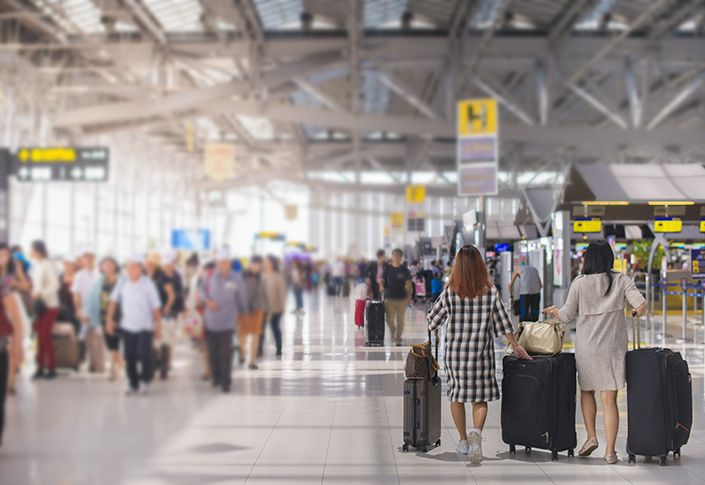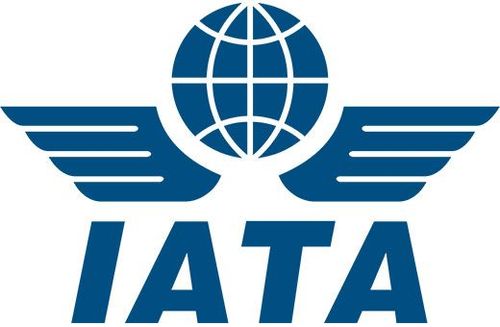Where travel agents earn, learn and save!
News / Recovery delayed as international travel remains locked down
The recovery in traffic has been slower than had been expected

July 30 - The International Air Transport Association (IATA) released an updated global passenger forecast showing that the recovery in traffic has been slower than had been expected.
In the base case scenario:
• Global passenger traffic (revenue passenger kilometers or RPKs) will not return to pre-COVID-19 levels until 2024, a year later than previously projected • The recovery in short haul travel is still expected to happen faster than for long haul travel. As a result, passenger numbers will recover faster than traffic measured in RPKs. Recovery to pre-COVID-19 levels, however, will also slide by a year from 2022 to 2023. For 2020, global passenger numbers (enplanements) are expected to decline by 55% compared to 2019, worsened from the April forecast of 46%
June 2020 passenger traffic foreshadowed the slower-than-expected recovery. Traffic, measures in RPK, fell 86.5% compared to the year-ago period. That is only slightly improved from a 91.0% contraction in May. This was driven by rising demand in domestic markets, particularly China. The June load factor set an all-time low for the month at 57.6%.
The more pessimistic recovery outlook is based on a number of recent trends:
• Slow virus containment in the US and developing economies: Although developed economies outside of the US have been largely successful in containing the spread of the virus, renewed outbreaks have occurred in these economies, and in China. Furthermore there is little sign of virus containment in many important emerging economies, which in combination with the US, represent around 40% of global air travel markets. Their continued closure, particularly to international travel, is a significant drag on recovery• Reduced corporate travel: Corporate travel budgets are expected to be very constrained as companies continue to be under financial pressure even as the economy improves. In addition, while historically GDP growth and air travel have been highly correlated, surveys suggest this link has weakened, particularly with regard to business travel, as video conferencing appears to have made significant inroads as a substitute for in-person meetings
• Weak consumer confidence: While pent-up demand exists for VFR (visiting friends and relatives) and leisure travel, consumer confidence is weak in the face of concerns over job security and rising unemployment, as well as risks of catching COVID-19. Some 55% of respondents to IATA’s June passenger survey don’t plan to travel in 2020
Owing to these factors, IATA’s revised baseline forecast is for global enplanements to fall 55% in 2020 compared to 2019 (the April forecast was for a 46% decline). Passenger numbers are expected to rise 62% in 2021 off the depressed 2020 base, but still will be down almost 30% compared to 2019. A full recovery to 2019 levels is not expected until 2023, one year later than previously forecast.
Meanwhile, since domestic markets are opening ahead of international markets, and because passengers appear to prefer short haul travel in the current environment, RPKs will recover more slowly, with passenger traffic expected to return to 2019 levels in 2024, one year later than previously forecast. Scientific advances in fighting COVID-19 including development of a successful vaccine, could allow a faster recovery. However, at present there appears to be more downside risk than upside to the baseline forecast.
June 2020 Performance
| UNE 2020 (% YEAR-ON-YEAR) | WORLD SHARE1 | RPK | ASK | PLF (%-PT)2 | PLF (LEVEL)3 |
|---|---|---|---|---|---|
|
Total Market |
100.0% |
-86.5% |
-80.1% |
-26.8% |
57.6% |
|
Africa |
2.1% |
-96.5% |
-84.5% |
-54.9% |
16.2% |
|
Asia Pacific |
34.6% |
-74.4% |
-69.6% |
-18.5% |
63.8% |
|
Europe |
26.8% |
-93.7% |
-90.0% |
-31.9% |
55.5% |
|
Latin America |
5.1% |
-91.2% |
-89.0% |
-16.7% |
66.6% |
|
Middle East |
9.1% |
-95.5% |
-90.4% |
-40.7% |
35.7% |
|
North America |
22.3% |
-86.3% |
-76.9% |
-36.5% |
52.4% |
International Passenger Markets
June international traffic shrank by 96.8% compared to June 2019, only slightly improved over a 98.3% decline in May, year-over-year. Capacity fell 93.2% and load factor contracted 44.7 percentage points to 38.9%.Asia-Pacific Airlines
June traffic plummeted 97.1% compared to the year-ago period, little improved from the 98.1% decline in May. Capacity fell 93.4% and load factor shrank 45.8 percentage points to 35.6%.
European Carriers
European carriers saw demand topple 96.7% in June versus a year ago, compared to a 98.7% decline in May. Capacity dropped 94.4% and load factor lessened 35.7 percentage points to 52.0%.
Middle Eastern Airlines
traffic collapsed 96.1% for June against June 2019, compared with a 97.7% demand drop in May. Capacity contracted 91.1%, and load factor crumbled to 33.3%, down 43.1% compared to a year ago.
North American Carriers
Carriers had a 97.2% traffic decline in June, barely improved from a 98.3% decline in May. Capacity fell 92.8%, and load factor dropped 53.8 percentage points to 34.1%.
Latin American Airlines
Suffered a 96.6% demand drop in June compared to the same month last year, from a 98.1% drop in May. Capacity fell 95.7% and load factor sagged 17.7 percentage points to 66.2%, which was the highest among the regions.
African Airlines
Traffic sank 98.1% in June, little changed from a 98.6% demand drop in May. Capacity contracted 84.5%, and load factor dived 62.1 percentage points to just 8.9% of seats filled, lowest among regions.
Domestic Passenger Markets
| JUNE 2020 (% YEAR-ON-YEAR) | WORLD SHARE1 | RPK | ASK | PLF (%-PT)2 | PLF (LEVEL)3 |
|---|---|---|---|---|---|
|
Domestic |
36.2% |
-67.6% |
-55.9% |
-22.8% |
62.9% |
|
Australia |
0.8% |
-93.8% |
-89.1% |
-33.8% |
44.4% |
|
Brazil |
1.1% |
-84.7% |
-83.3% |
-7.1% |
74.7% |
|
China P.R. |
9.8% |
-35.5% |
-21.3% |
-15.2% |
69.5% |
|
Japan |
1.1% |
-74.9% |
-63.4% |
-22.4% |
48.8% |
|
Russian Fed. |
1.5% |
-58.0% |
-36.4% |
-28.9% |
56.4% |
|
US |
14.0% |
-80.1% |
-67.4% |
-34.9% |
54.7% |
China’s Carriers
Carriers continued to lead the recovery, with traffic down 35.5% in June compared to the year-ago period, raised from a 46.3% decline in May.
Japan’s Airlines
Airlines saw improved domestic demand after the state of COVID-19 emergency was lifted in late May. Domestic RPKs fell by 74.9% year-on-year in June, compared with around 90% annual declines in the previous two months.
The Bottom Line
IATA urges governments to implement a layer of measures including the International Civil Aviation Organization’s (ICAO’s) global guidelines for restoring air connectivity contained in ICAO’s Takeoff: Guidance for Air Travel through the COVID-19 Public Health Crisis. IATA also sees potential for accurate, fast, scalable and affordable testing measures and comprehensive contact tracing to play a role in managing the risk of virus spread while re-connecting economies and re-starting travel and tourism. “We need to learn to manage the risks of living with COVID-19 with targeted and predictable measures that will safely re-build traveler confidence and shattered economies,” said de Juniac.
For more information, please visit iata.org
More Travel News:
WTTC calls upon governments to implement comprehensive testing facilities at airports
WTTC launches Insurance Guidelines for the Travel & Tourism sector
Register now for UNITE 2020, a Global Virtual Trade Show
Impact of COVID-19 on global tourism made clear as UNWTO counts the cost of standstill











